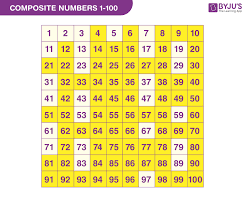Composite numbers are integers that have more than two distinct positive divisors. This means they can be divided evenly by numbers other than one and themselves. Contrary to prime numbers, which can only be divided by one and the number itself, composite numbers have at least one additional divisor.
The number 4 is an example of a composite number because in addition to being divisible by 1 and 4, it can also be divided by 2. Similarly, the number 6 is a composite number because it has four positive divisors: 1, 2, 3, and 6.
To understand composite numbers better, it’s important to clarify what factors are. Factors of a number are integers that can be multiplied together to produce that number. For instance, if we take the number 12, its factors are 1, 2, 3, 4, 6, and 12. Since there are more than two factors in this list, we identify it as a composite number.
Identifying a composite number is straightforward; any integer greater than one that is not prime is considered composite. However, the differentiation of these numbers continues beyond their definition. Just as we classify prime numbers into different types like twin primes or Mersenne primes, there are also different kinds of composite numbers:
1. Square Numbers: These are composites which can be represented as the square of an integer. For example, 9 (which is 3 x 3) and 16 (which is 4 x 4).
2. Cubed Numbers: These are composites that result from an integer being raised to the power of three. An example would be the number 27 which is equal to \(3^3\).
3. Powerful Numbers: A positive integer is powerful if every prime factor occurs twice or more in its prime factorization. For example, the number \(72\) (which has a prime factorization of \(2^33^2\)), is powerful since both prime factors \(2\) and \(3\) appear squared.
Composite numbers play a critical role in mathematics and its various branches like number theory and abstract algebra. They are also foundational elements in cryptography — particularly RSA encryption — where large composite numbers derived from two priming factors create secure cryptographic keys.
Understanding how composite numbers work helps us gain deeper insight into how integers can be broken down into fundamental building blocks — primes — and reassembled in various ways to create new numbers. It’s through these building blocks that we can explore the realm of mathematics further while applying these concepts to practical situations such as coding theory and internet security protocols.





